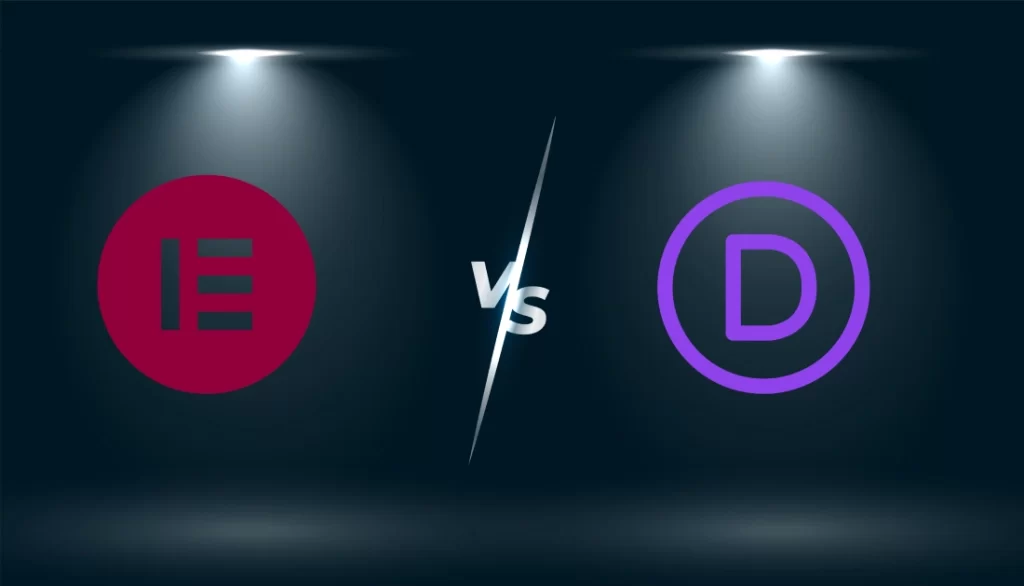
Elementor vs Divi: Which WordPress Builder Fits Different Kinds of Sites in 2025?
Choosing between Elementor and Divi isn’t about which one is Choosing between Elementor and Divi isn’t about which one is universally “better.” It’s about which one matches the way a site is built, maintained, and scaled. Both are powerful visual builders with full theme building, dynamic data, and WooCommerce support—but their pricing, ecosystem, workflow, and performance profiles differ in ways that matter depending on use case.
Quick Verdict
- Choose Elementor for flexibility, a strong free tier, huge add-on ecosystem, and granular UX control via popups, kits, and widgets. It’s easier for beginners and teams that rely on third‑party integrations, with annual pricing per site starting around $59–$60/year as of 2025.
- Choose Divi for bundled value, unlimited site usage, lifetime licensing, and built‑in marketing features like native A/B testing and granular role controls—especially attractive for agencies and freelancers building many sites. Pricing starts at $89/year with a $249 lifetime option in 2025; higher “Pro” bundles add Divi AI/Cloud/VIP.
Pricing and Licensing
- Elementor: Pro plugin plans are subscription-based with tiers by site count. Common 2025 pricing shows 1 site at $59–$60/year, scaling to larger bundles (e.g., 3 sites $99/year, 25 sites $199/year, 1,000 sites $399/year).
- Divi: No free version, but licenses cover unlimited websites. Yearly plans start at $89, and there’s a $249 lifetime access option; a “Pro” tier adds extras like Divi AI, Cloud, and VIP support (e.g., $277/year or $297 lifetime+Pro bundle).
What it means:
- Solo site owners on a budget can start free on Elementor, then unlock Pro per site.
- Agencies building many sites gain cost efficiency with Divi’s unlimited and lifetime licenses.
Feature Differences That Affect Daily Work
- Built‑in A/B testing: Divi includes native split testing across modules, a notable advantage for marketers. Elementor requires a third‑party plugin for similar testing workflows.
- Form logic: Divi’s form module includes built‑in conditional logic; Elementor Pro’s native form lacks that and often needs an add‑on if advanced logic is required.
- Role controls: Divi offers a granular role editor within the builder—useful for client hand‑offs and team governance. Elementor’s role controls are more basic at the interface level.
- Popup builder: Elementor Pro includes a robust popup builder with advanced triggers and display rules. Divi doesn’t ship a native popup builder at the same depth; developers typically use workarounds or third‑party solutions.
- Ecosystem and templates: Elementor’s third‑party add‑on ecosystem is massive, with a broad library of widgets and kits; Divi counters with coordinated layout packs and a deep theme+builder combo (Divi Theme or Divi Builder plugin).
Performance Notes
Independent comparisons vary by test setup, but trends are consistent:
- Elementor tends to make more requests but can load slightly faster when optimized; both deliver competitive results with proper hosting and caching.
- Some reports note Divi performing very well on desktop scores and comparably on mobile in certain configurations, while Elementor is often favored for clean code paths and SEO‑friendly setups out of the box. Real‑world results depend heavily on theme, add‑ons, and optimization practices.
Bottom line:
- Keep add‑ons lean, optimize images/assets, and use caching/CDN regardless of builder choice. Either can be fast when treated carefully.
Ease of Use and Workflow
- Editor feel: Elementor’s UI is widely regarded as simpler for beginners, with a section/column model, inline editing, and intuitive controls; Divi uses sections/rows with floating controls and powerful inline editing once learned.
- Free vs paid ramp: Elementor’s free version provides 40+ widgets and a real taste of the workflow before committing to Pro. Divi requires a purchase to start, but then unlocks unlimited usage and bundled tools.
- Consistency and scaling: Agencies often prefer Divi for standardized kits, role control, and unlimited licensing; product teams and advanced tinkerers may prefer Elementor for the popup builder, third‑party extensions, and per‑site tuning.
WooCommerce and Marketing
- WooCommerce: Both offer solid WooCommerce widgets and templates. Elementor’s popup builder is excellent for promos, modals, and lead‑capture UX; Divi’s native A/B testing helps optimize PDPs and CTAs without extra plugins.
- Lead capture and forms: Divi’s conditional form logic is a plus for multi‑step or branched forms; Elementor often leans on third‑party form plugins for complex logic while keeping the builder streamlined.
Real‑World Pricing Scenarios (2025)
- One site, needs popups and theme building: Elementor Pro ~$59–$60/year is cost‑effective and easy to maintain.
- Many client sites, predictable stack, wants testing: Divi $249 lifetime pays off quickly and includes native split testing, with optional “Pro” services for AI/Cloud/VIP if needed.
- Free start, gradual upgrade: Elementor offers a credible free tier before upgrading to Pro; Divi requires upfront purchase but grants unlimited usage thereafter.
Pros and Cons Snapshot
Elementor
- Pros: Free tier; strong popup builder; huge add‑on ecosystem; polished UI; fine‑grained per‑site control.
- Cons: No lifetime license; advanced form logic usually needs add‑ons; role controls less granular than Divi’s.
Divi
- Pros: Unlimited sites; lifetime option; built‑in A/B testing; conditional form logic; granular role editor; theme+builder synergy.
- Cons: No free version; learning curve can feel steeper; popups often require third‑party solutions or custom approaches.
Who Should Choose What?
- Beginners and solo creators: Elementor for the free start and intuitive editor; upgrade as needed.
- Marketers and CRO‑focused teams: Divi for native split testing and role controls that support governed experiments.
- Agencies/freelancers with multiple sites: Divi for unlimited/lifetime economics and consistent hand‑off controls.
- Tinkerers and integration-heavy builds: Elementor for ecosystem depth, popup builder, and modular add‑ons.
Final Take
In 2025, Elementor excels at flexibility, ecosystem breadth, and rapid per‑site iteration—especially if the popup builder and a strong free tier matter. Divi shines for long‑term value, governance, and built‑in marketing ops through A/B testing and conditional forms, especially compelling with lifetime licensing. Both can deliver fast, beautiful sites when optimized well; the right choice maps to budget model (per‑site vs unlimited), feature priorities (popups vs native testing/logic), and team workflow (solo build vs agency scale).

